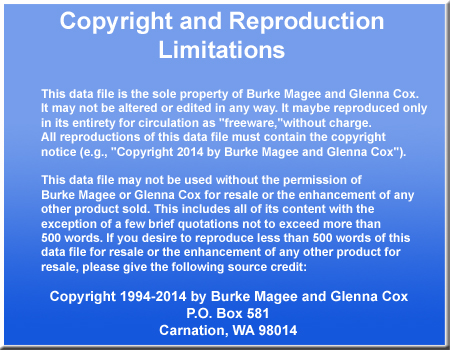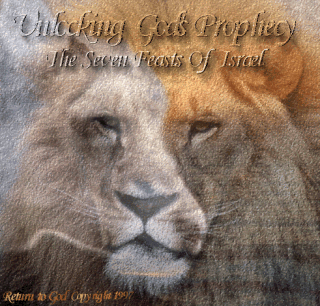 |
 |
| Yeshua (Jesus)
fulfills the Spring Feasts (Passover, Unleavened Bread, First Fruits, Pentecost) |
| God's plan for the
salvation of humanity is shown by the seven feasts He gave to ancient Israel in Leviticus
23. The seven feasts are patterns that describe the two comings of Yeshua Ha Mashiach
(Jesus the Messiah, or Jesus Christ). God told the people of Israel to celebrate these
feasts as "lasting ordinances." While most Jewish people still celebrate the feasts, it's unfortunate that many don't understand Yeshua's fulfillment of them, and thus miss the Messiah that was sent for their salvation. It is also unfortunate that most Christians don't celebrate the feasts, for they would clearly see that the feasts symbolize Yeshua's work. They could then use the feasts to better understand and praise God and rejoice in His plan for the salvation of man. |
The four spring feasts
describe the first coming of Yeshua. He sacrificed Himself on the Feast of Passover, was
buried on the Feast of Unleavened Bread, was resurrected on the Feast of First Fruits, and
He sent the Holy Spirit on the Feast of Weeks (Shavuot or Pentecost). The practices of
each of these spring feasts clearly depict Yeshua's death and resurrection. Yeshua is the Passover Lamb of God. "behold, the Lamb of God who takes away the sin of the world!" -- John 1:29. Yeshua is the Unleavened Bread of Life. "I am the living bread that came down out of heaven; if anyone eats of this bread, he shall live forever; and the bread also which I shall give for the life of the world is My flesh." -- John 6:51 |
Yeshua is the First
Fruits. "But now Christ has been raised from the dead, the first fruits of those who are asleep" -- 1 Corinthians 15:20. Yeshua sent the Holy Spirit on the Feast of Weeks (Shavuot or Pentecost). "And when the day of Pentecost had come, they were all together in one place... And they were all filled with the Holy Spirit..." -- Acts 2:1-4 Because Yeshua's fulfillment of the spring feasts is so exact, it seems reasonable that He may also fulfill the remaining fall feasts. In the Fall Feasts article, we will describe a view among Bible teachers as to how Yeshua may fulfill the fall feasts and return on Yom T’ruah to reclaim His Bride, the church; celebrate the Marriage Supper of the Lamb in Heaven; then return to earth seven years later on Yom Kippur to establish His Kingdom beginning on Sukkot and reign for one thousand years. |
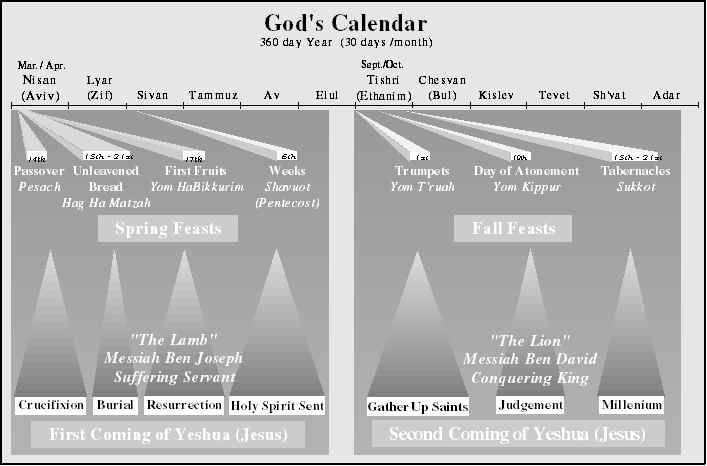 |
Feasts Are Divine Appointments - Shadows of Things to Come |
| How do we know that God
intended the feasts to show His plan for salvation? One of the clues that indicates the
feasts have more significance than mere tradition and remembrance is found in Leviticus
23:4: "These are the appointed times of the Lord, holy convocations which you shall proclaim at the times appointed for them..." |
The Hebrew translated as
"holy convocations" actually means "rehearsals". These feasts then
were appointed times of rehearsals for events that were to occur in the future. Paul provides the same conclusion when he refers to the feasts as shadows of things to come and states that the true substance belongs to Christ in Colossians 2:16-17: |
"Therefore let no
one act as your judge in regard to food or drink or in respect of a festival or a
new moon or a Sabbath day -- things which are a mere shadow of what is to come; but
the substance belongs to Christ." First century believers in Yeshua understood that the feasts symbolized God's plan for salvation of man through Yeshua, the long awaited Messiah. They continued to practice the celebrations, but with new joy and understanding of the substance that was the Messiah! |
| Yeshua Fulfills The Spring Feasts |
The first coming of Yeshua completely fulfilled the pattern set by the four spring feasts (See Spring Feasts on God's Calendar). The Hebrew and English names for these feasts are:
Passover (Pesach) Exodus 12:2-11 and Leviticus 23 Historically, Passover marks the national liberation of the Hebrews from Egyptian slavery. Pesach, the Hebrew name of the feast literally means "the lamb". God instructed each family to take an unblemished year-old male lamb to their home on the tenth day of the first month. They were to examine the lamb for four days to see that it was perfect. On the fourth day at twilight, they were to kill the lamb and take some of the lamb’s blood and place it on the two doorposts and the lintel of their house. On the first Passover, the avenging angel of God killed every first born male throughout the land, from Pharaoh, to slave, to camel. The angel would "Passover" those homes that protected themselves by placing the blood of a lamb on their doorposts and lintels. |
Fulfillment of Passover by Yeshua -- The Passover Lamb "...For Christ, our Passover lamb, has been sacrificed" -- 1 Corinthians 5:7 (NIV). "...Like a lamb that is led to slaughter, And like a sheep that is silent before its shearers..." -- Isaiah 53:7. "Behold, the Lamb of God who takes away the sin of the world!" -- John 1:29. Yeshua completely fulfilled the Passover events with exact timing as shown in Table 1. Procession of the Lamb When Israel had a Temple, in addition to the lamb for each household, a lamb was chosen to die for the sins of the entire nation. On the 10th of Nisan, it was lead in a huge procession from Bethany to the Temple. During the procession, the people waved Palm branches and sang Psalms, including: "O Lord save us (Hosanna)... Blessed is he who comes in the name of the Lord" -- Psalm 118:25-26 (NIV). Yeshua rode into the city to the Temple on the same day (Nisan 10) as the procession of the lamb chosen to die for the sins of the nation. By doing this, He was proclaiming Himself to be "the Lamb of God who takes away the sin of the world" -- John 1:29. As Yeshua passed, the people shouted, "Hosanna to the Son of David. Blessed is He who comes in the name of the Lord" -- Matthew 21:9 (NIV). Yeshua, the Passover Lamb Examined Just as the Passover lamb was examined for four days prior to Passover, so Yeshua entered the Temple and was examined for four days prior to Passover by the Sadducees and the Pharisees. "On that day some Sadducees (who say there is no resurrection) came to Him and questioned Him..." -- Matthew 22:23-33 "Then the Pharisees went and counseled together how they might trap Him in word what He said." -- Matthew 22:15-22 |
Lambs Prepared for Sacrifice Yeshua was prepared for sacrifice and beaten on the morning of Passover, just as a lamb to be sacrificed in the Temple was prepared on Passover morning. "Now when morning had come, all the chief priests and the elders of the people took counsel against Yeshua to put Him to death and they bound Him, and led Him away..." -- Matthew 27:1 "...after having Jesus scourged, he delivered Him to be crucified." -- Matthew 27:26 Lambs Slain "Between the Evenings" Yeshua was slain at the same time the unblemished lamb was slain on Passover. According to God's instructions the Passover lamb had to be slain "between the evenings" (Exodus 12:6). Yeshua gave up His spirit at the exact time the lambs were to be killed -- the ninth hour. "Between the evenings" and "the ninth hour" are based on the manner by which the Temple priests calculated time. Both refer to the same time -- three o'clock in the afternoon. "And about the ninth hour Jesus cried out with a loud voice,..." -- Matthew 27:46 "And Jesus cried out again with a loud voice, and yielded up His spirit." -- Matthew 27:50 That Yeshua died in just three hours is incredible. Typically, death by crucifixion took three days. The Romans were experts at crucifixion. They wanted the crucified person to live in agony for days, while frightened friends, relatives and travelers stared in horror. Yeshua, a strong young man should not have died so quickly. He died at three in the afternoon to keep a Divine Appointment! |
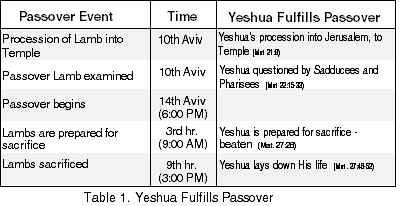 |
The Feast of Unleavened Bread (Hag haMatzah) Leviticus 23:5-8 |
| Historically, the Feast of
Unleavened Bread is a remembrance of God bringing the Hebrews out of Egypt. It begins at
sunset of Nisan/Aviv 15. In ancient Israel, days were counted from evening to evening,
therefore sunset (6:00 PM) of Nisan/Aviv 14 begins a new day -- Nisan/Aviv 15. The Feast
of Unleavened Bread continues for seven days until Nisan/Aviv 21. During this period only
unleavened bread is to be eaten. The first meal, eaten on the evening of the 15th, is special. After the Hebrews sacrificed the Passover lamb, they were to roast and eat all the flesh of the lamb (head, legs and entrails) together with bitter herbs and unleavened bread (matzah). No bone of the lamb was to be broken (Exodus 12:46). Traditionally, the meal begins as the woman of the house lights candles. The man takes three loaves of unleavened bread and places them in a white linen envelope that has three compartments. The unleavened bread looks like a flat cracker. It is marked with stripes and has holes pierced through from cooking. The father removes the middle loaf from its compartment, breaks it, wraps it in a separate piece of white linen and "buries" it behind his chair cushion or in a drawer where it is later "redeemed" by the father for a price. During the meal, four cups of wine are drunk. The Passover meal concludes with singing. One of the traditional songs is Psalms 118:21-24. In it we find the prophetic tragedy of the Nation of Israel rejecting the Messiah: "I shall give thanks to Thee, for Thou has answered me; and Thou hast become my salvation. The stone which the builders rejected Has become the chief corner stone. This is the Lord's doing; it is marvelous in our eyes. This is the day that the Lord has made; let us rejoice and be glad in it..." |
Yeshua, the Bread of Life Fulfills the Feast of Unleavened Bread "I am the bread of life..." -- John 6:35. The Feast of Unleavened Bread is symbolic of Yeshua's death and burial. Yeshua fulfilled all the patterns of the feast (see Table 2 for a summary). No Bones Broken Though it was a common and merciful Roman practice to break the legs of the crucified to hasten their death and relieve their suffering, none of Yeshua's bones were broken, just as the Passover lamb is to have no bone broken. "The soldiers therefore came, and broke the legs of the first man, and of the other man who was crucified with Him; But coming to Jesus, when they saw that He was already dead, they did not break His legs." -- John 19:32-33 Yeshua, the Pure Unleavened Bread. When breaking the bread at His last meal, Yeshua said to His disciples, "Take and eat; this is my body." -- Matthew 26:26. Leaven represents sin, thus unleavened bread is a good representation of our sinless Messiah, the Bread of Life. Yeshua bore stripes from Roman beatings; the unleavened bread is marked with stripes. Yeshua was pierced in the side when He was crucified; the unleavened bread has holes pierced throughout for cooking. Yeshua was born in the town of Bethlehem, which translates from Hebrew: "House of Bread". |
Like the father who wraps
the unleavened bread in linen, hides (buries) it and later redeems it, Yeshua was wrapped
in linen, buried and He paid the price of our redemption with His perfect sacrifice. "And Joseph took the body and wrapped it in a clean linen cloth, and laid it in his own new tomb..." -- Matthew 27:59 The Light of the World The candles lit by the woman of the home are symbolic of the Messiah, The Light of the World. The woman is symbolic of Mary, who God chose to bring us the Light of the World. "...Jesus spoke to them saying, 'I am the light of the world...' " --John 8:12 Yeshua's Blood of the New Covenant The wine in the Passover meal represents Yeshua's blood, as He told His disciples. "And when He had taken a cup and given thanks, He gave it to them, saying, ' drink from it , all of you; for this is My blood of the covenant, which is poured out for many for forgiveness of sins.' " -- Matthew 26:27-28 The Cornerstone The traditional hymn sung at Passover, Psalms 118:21-24 speaks of Yeshua when it speaks of the "stone which was rejected". Peter confirms this in Acts 4:11: "He is the stone which was rejected by you, the builders, but which became the very corner stone." -- Acts 4:11 |
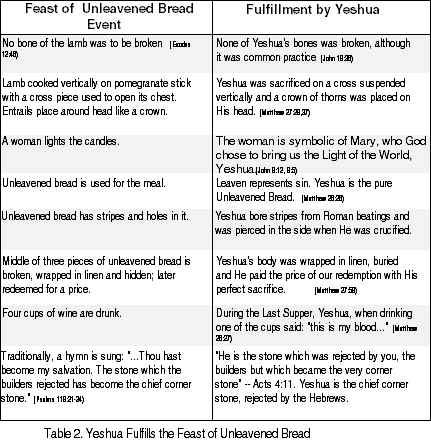 |
The Feast of First Fruits (Yom HaBikkurim) Leviticus 23:9-14 |
| Historically, the Feast of First Fruits was the day that the Hebrew slaves went down into the Red Sea and emerged alive on the other side, while Pharaoh was swallowed up by the Red Sea. This set the Israelites free as the First Fruits from Egyptian bondage. The Feast of First Fruits falls on the day after the Sabbath, during the week of the Feast of Unleavened Bread. This is the first Sunday after the fifteenth of Nisan/Aviv (see Spring Feasts on God's Calendar). When God brought the children of Israel into the Promised Land, they were to bring the best first fruits of their harvest and present them to the Lord. Josephus records that the people did not partake of the harvest until the first fruits were presented (Antiquities of the Jews 3.10.5). It is unfortunate that modern Christianity has come to call this feast Easter, whose name is derived from the Babylonian Goddess Ishtar. | Yeshua, the First Fruits Fulfills the Feast of First Fruits "But now Christ has been raised from the dead, the first fruits of those who are asleep. For since by a man came death, by a man also came the resurrection of the dead. For as in Adam all die, so also in Christ all shall be made alive. But each in his own order: Christ the first fruits, after that those who are Christ's at His coming,..." -- I Corinthians 15:20-23 Yeshua is the First Fruits. Yeshua is first in order and preeminence, just as the offering of fruits is to be the first and the "best portion". He was resurrected on the Feast of First Fruits, the first day after the Sabbath. "...and the tombs were opened; and many bodies of the saints who had fallen asleep were raised; and coming out of the tombs after His resurrection they entered the holy city and appeared to many." -- Matthew 27:52-53. |
"Now after the
Sabbath, as it began to dawn toward the first day of the week, Mary Magdalene
and the other Mary came to look at the grave... And the angel answered and said to the
women, 'Do not be afraid; for I know that you are looking for Jesus who has been
crucified; He is not here, for He has risen, just as He said...'" -- Matthew 28:1,
5-6 Yeshua also being The High Priest and always one to observe the Feasts of Israel, gave a first fruits offering of people! |
The Feast of Weeks (Shavuot or Pentecost) Leviticus 23:15-22 |
| God instructed the
children of Israel to count seven Sabbaths from the day after the first Sabbath during the
Feast of Unleavened Bread. The day following the forty-ninth day is the Feast of Weeks, on
the 6th of Sivan. The forty-nine days are called "The Counting of the Omer".
They connect the Feast of First Fruits (the barley harvest) with the Feast of Weeks (the
beginning of the wheat harvest). On the Feast of Weeks, a wave offering of two loaves of
bread made of fine flour and leaven is presented to the Lord. Some scholars believe that the giving of the Law to Moses and the people of Israel occurred on the Feast of Weeks. |
Holy Spirit Given on the Feast of Weeks Following His resurrection, Yeshua appeared to His disciples and told them to wait in Jerusalem until He sent forth "the promise" of His Father (Luke 24:49). We know the Holy Spirit was given exactly fifty days following Yeshua's resurrection, because the New Testament clearly mentions that it occurred on Pentecost. "And when the day of Pentecost had come, they were all together in one place. And suddenly there came from heaven a noise like a violent, rushing wind, and it filled the whole house where they were sitting. |
And there appeared to
them tongues as of fire distributing themselves, and the rested on each one of them. And
they were all filled with the Holy Spirit..." -- Acts 2:1-4 The two loaves of leavened bread offered to God during this feast represent the Jew and Gentile together as one body in Yeshua. The fine flour in which the loaves are made represents the perfect righteousness of Yeshua. The leaven represents the sin in the lives of the Jew and the Gentile until Yeshua's return. If the scholars are correct about the giving of the law to Moses, the Feast of Weeks depicts both the giving of the law and the giving of the Holy Spirit. |
Yeshua's Fulfillment of the Spring Feast is Exact! |
| Yeshua is the Passover
Lamb of God. "behold, the Lamb of God who takes away the sin of the world!" -- John 1:29. Yeshua is the Unleavened Bread of Life. "I am the living bread that came down out of heaven; if anyone eats of this bread, he shall live forever; and the bread also which I shall give for the life of the world is My flesh." -- John 6:51 |
Yeshua is the First
Fruits. "But now Christ has been raised from the dead, the first fruits of those who are asleep" -- 1 Corinthians 15:20. Yeshua sent the Holy Spirit on the Feast of Weeks (Shavuot or Pentecost), the same day that the law is thought to have been given to Moses and the people of Israel. "And when the day of Pentecost had come, they were all together in one place... And they were all filled with the Holy Spirit... " -- Acts 2:1-4 |
The accuracy in which
Yeshua fulfilled the spring feasts at His first appearance is inescapable! The question
now is: "How might Yeshua fulfill the fall feasts?" In the Fall Feasts article,
we will describe a view among Bible teachers as to how Yeshua may fulfill the fall feasts
and return on Yom T’ruah to reclaim His Bride, the church, celebrate the Marriage
Supper of the Lamb in Heaven, then return to earth in seven years on Yom Kippur to
establish His Kingdom beginning on Sukkot and reign for one thousand years. There are many wonderful details not presented here but which will add to your faith and understanding of the purpose of the Feasts of Israel. We urge you to study the various references below. |
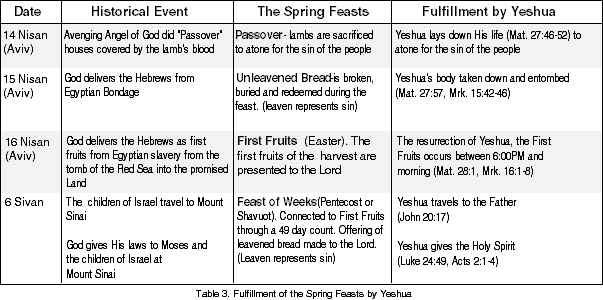 |
| References |
| The Seven Feasts of Israel by Zola Levitt The Miracle of Passover by Zola Levitt The Gospel in The Feasts of Israel by Victor Buksbazen The Fall Feasts of Israel by Mitch and Zhava Glaser Yeshua in the Feasts of Israel by Richard Booker The Jewish Holidays by Michael Strassfeld God Intervenes in the Middle East by Marion F. Kremers Israel’s Holy Days In Type and Prophecy by Daniel Fuchs The Complete Works of Josephus Bible quotations are from the New American Standard Bible, except where noted. NIV = New International Version. |
Back to http://www.ReturnToGod.com
